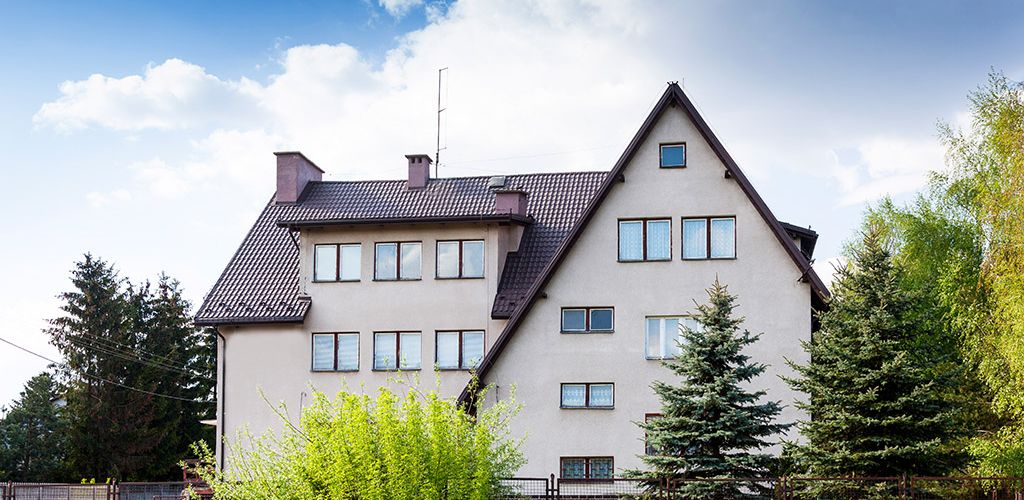Thermal modernization – what is it?
Thermal modernization is any action that aims to reduce the demand for thermal energy in a given building. As indicated by the act on supporting thermal modernization and renovations, it must result in, among other things:
- limiting the amount of energy used to heat domestic water and home heating;
- reducing heat losses in the building;
- changing or modernizing energy sources to renewable sources;
- increase in thermal comfort of household members.
Important!
Thermal modernization should not be confused with building revitalization.
Thermal modernization – what does it include?
Thermal modernization of buildings includes, among others, works such as:
- replacement of heating and ventilation systems;
- replacement of windows and external doors;
- improving the thermal insulation of building walls, roofs, ceilings and floors;
- implementation of energy consumption monitoring systems.
The specific scope of work performed depends on the specifics of the building and the needs of the household members; however, the key goal of thermal modernization is always to reduce heat losses and improve thermal comfort while taking into account ecological issues.
You may be interested in: "What is sustainable construction? How to adapt secondary market properties?"
Does thermal modernization require a building permit?
A building permit is necessary if construction works are planned that involve significant reconstruction of a given building. Notification in the form of an appropriate declaration to the office may be required, for example, for the replacement of a heating system – e.g. the installation of a heat pump or a photovoltaic system, if it is to result in a clear interference with the structure of the building.
Energy audit before thermal modernization of the building
Before starting thermal modernization in a building, an energy audit, also known as a thermal audit, should be carried out. It may include, among other things, determining the efficiency of the central heating system, determining the thickness of thermal insulation or measuring the tightness of windows. Its main purpose is to detect any insulation defects, check the technical condition of the building partitions and generally assess the possibility of using various types of solutions. The audit significantly facilitates determining the sequence of thermal modernization works, as well as the selection of the method that will be the most profitable both in terms of economy and heat.
Thermal modernization of buildings – funding
For the thermal modernization of a house on the secondary market, you can obtain funding under one of several programs in force in Poland, including:
- My Current;
- My Warmth;
- Warm apartment.
Important!
The Clean Air Program (thermal modernization of buildings, e.g. replacement of an old furnace) – was suspended on November 28, 2024. Its new version is to be announced in spring this year.
Funding can be obtained if, among other things, work is planned to be carried out on replacing windows and external doors, purchasing a garage door or insulating walls. Financial support can also be obtained for replacing an old solid fuel furnace with a heat pump or an innovative condensing boiler. Funding also covers design documentation, an energy audit before thermal modernization, installation of central heating/hot tap water, a photovoltaic micro-installation and the purchase and installation of mechanical ventilation with heat recovery.
Check, what is the difference between the primary market and the secondary market .
Is thermal modernization tax deductible?
For people who incur expenses for the implementation of thermal modernisation projects in their home, the so-called thermal modernisation relief is provided. It is available to income tax payers who pay tax on general terms, at a flat rate or a lump sum on recorded income and who are owners or co-owners of single-family residential buildings. The relief can be deducted in the tax return, which must be submitted to the tax office by the end of April. The amount of the deduction cannot exceed PLN 53,000 in relation to all thermal modernisation projects implemented in buildings of which the person is the owner or co-owner. Deductions are made in the PIT-36, PIT-36L, PIT-37 or PIT-28 tax return. In such a case, the PIT/O attachment (information on deductions) must be attached to the form. The relief can be deducted when the owner or co-owner of a single-family building has an invoice issued by an active VAT payer or an invoice that includes value added tax and was issued by an entity from an EU Member State.
It's worth knowing!
If the thermal modernization project is not completed within three years of the end of the tax year in which the first expense was incurred, the relief must be repaid. In such a situation, the amount previously deducted for this reason for the tax year in which the three-year period expired must be added to the income (revenue).
